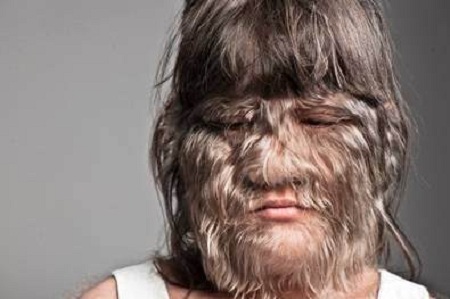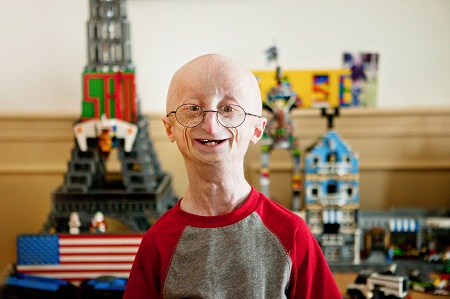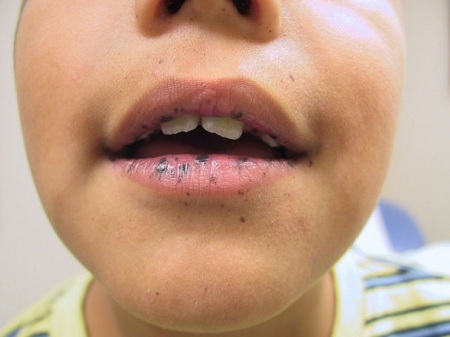Check Out These Seven Most Rarest and Weirdest Diseases Known To Mankind That'll Give You Cringes!

Not many us may be aware of the fact that the last day of February is marked and celebrated as 'Rare Disease Day'. The day is celebrated with an intention to draw attention to various kinds of diseases that may affect a certain group of people.
A disease is something that has evolved right alongside man over the time being. While we all have heard, seen and suffered from a disease yet it's unlikely that we've ever encountered a rare disease.
Not many us might be aware of the fact that the last day of February is marked and celebrated as 'Rare Disease Day'. The day is celebrated with an intention to draw attention to various kinds of diseases that may affect a certain group of people.
We can simply call a disease weird and rare when it affects a very small group of the population. Some ongoing research has found out that 80% of rare diseases have identified to be of genetic origins whereas the rest are the result of infections, allergies, and environmental causes.
Here is a list of Seven Rare diseases around the world that you should know!
1. Werewolf Syndrome
Hyprtrichchosis, also known as "Werewolf Syndrome", is a health condition characterized by excessive hair growth all over the body. The disease can affect both women and men, however, the condition is extremely rare.

There are two types of syndromes, including generalized, covering the entire body parts and localized, covering the specific area.
Hypertrichosis can appear at birth or the condition may develop over time. There's no cure for the disease but under certain medication, you can manage the symptoms.
2. Fields' Disease
Fields' disease is called 'the rarest disease' in the world. The disease is named after two twins, Catherine and Kristie Fields from Wales.
The disease was first identified when the twins were around four years of age. It is a condition of the body where the body slowly deteriorates, which limits body movements.

Doctors have been unable to identify the disease. As a result, the sisters have undergone several tests and doctors finally concluded that they were born with the neuromuscular disease.
The frequency of the disease is therefore 1 in 3.75 billion people worldwide.
3. Hutchinson-Gilford Progeria
Usually known as Progeria, Hutchinson-Gilford Progeria is a rare genetic condition that causes a child's body to age faster. Most kids with the syndrome do not live past the age of 13.
The disease can affect both sexes and all races equally. The disease affects about 1 in every 4 million births across the globe.

In most cases, the disease is not inherited though it's caused because of a single mistake in a certain gene causes making up an abnormal protein.
Most kids with the disease look healthy when they're born but they slowly develop the disease during their first year.
4. Microcephaly
Microcephaly is a very rare condition that is seen immediately at birth or sometimes encountered before birth.
The head of the baby becomes smaller than normal baby's head during birth. It may be caused by genetic abnormalities or by drugs, alcohol, certain viruses or toxins the fetus is exposed to during pregnancy, damaging the brain tissue.

Sadly, a 2015-2016 outbreak of Zika virus in Brazil was associated with a large number of infants born with microcephaly.
5. Fibrodysplasia Ossificans Progressiva
Fibrodysplasia Ossificans Progressiva (FOP) is a disorder in which muscle tissue and connective tissue (tendons and ligaments) are replaced by bone.
The syndrome is generally detected in early childhood. Starting with the neck and shoulders, it slowly proceeds down the body and into the limbs.

It is said to affect 1 in 2 million people. There have been 700 confirmed cases in the world with 295 only in the United States.
FOP is detected as the only disease known to cause one type of organ system to convert into an entirely different one.
There's no known treatment for FOP; surgical procedure may help the victim getting rid of the bone but there's a risk the body to produce even more.
6. Lion Face Syndrome
Lion face syndrome, commonly known as Leontiasis Ossea is incredibly rare. The condition is characterized by an overgrowth of the facial and cranial bones.
The medical term 'Leontiasis Ossea' was first used by ancient Greek physician Rufus of Ephesus describing bone changes caused by a disease that made the sufferer appear to have a lion-like face.

It involves the extra growth of the bones of the face, specifically the maxilla or upper jaw. Growth in this area narrows the nasal opening, press the eye orbits and deform the mouth. Complete loss of sight is common, as the optic nerve is crushed by bone.
There's no treatment other than exposing the overgrown bone.
7. Cronkhite-Canada Syndrome
Cronkhite-Canada Syndrome is sporadic in nature. It is characterized by multiple polyps in the digestive tract.
The victim loses their sense of taste, lose hair, and suffers nail growth problems. CCS is mostly detected in older people with the average age being 59.

Within the past 50 years, only 400 known cases have been documented, initially throughout Japan.
Check Out The below video showing the worst and rare diseases of humankind.
Most of the bizarre medical conditions mentioned above don't have possible treatment options. Keep following our page for more health related articles.
